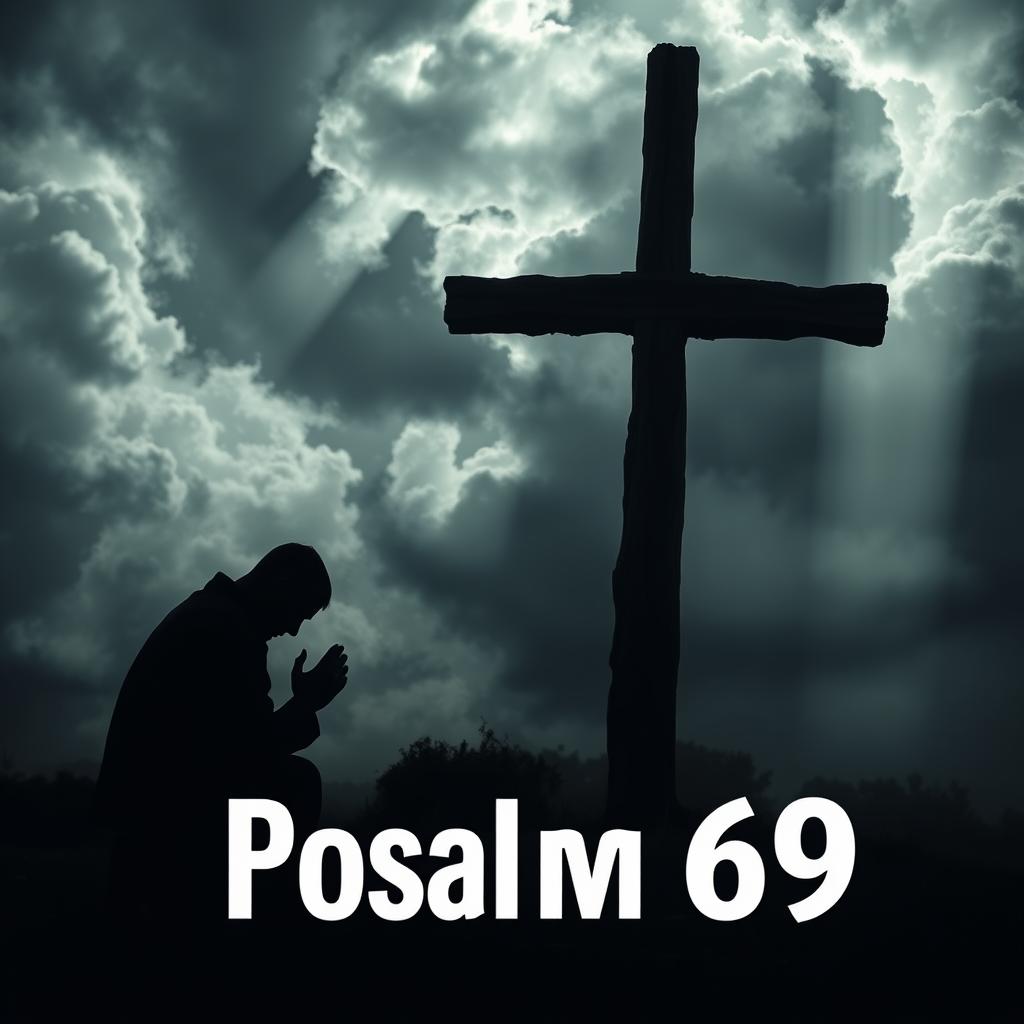The liturgical calendar helps us navigate the year with scripture reflections. On the Fifteenth Sunday in Ordinary Time, C Cycle, we find insights into God’s law, Christ’s supremacy, and the need for compassion.
This Sunday’s readings include Deuteronomy 30:10-14, Psalm 69:14,17,30-31,33-34,36,37, Colossians 1:15-20, and Luke 10:25-37. They encourage us to think about our bond with God and others. They highlight the importance of living our faith with love and kindness.
By diving into these readings, we’ll understand their message better. We’ll see how to live it out in our everyday lives. This will help us build a more caring and faithful community.
The Significance of Ordinary Time in the Liturgical Calendar
In the Catholic liturgical calendar, Ordinary Time is very important. It focuses on the Church’s growth and its members’ discipleship. This time is not ordinary because it’s not dull. Instead, it’s a period of deep focus on Christ’s teachings and the Church’s mission.
Ordinary Time has two parts. The first part comes after Christmas, and the second after Easter. During this time, the Church highlights Jesus’ teachings through readings and liturgies.
Understanding the C Cycle in the Catholic Liturgical Year
The Catholic liturgical year has a three-year cycle: Year A, Year B, and Year C. The C Cycle focuses on readings from the Gospel of Luke. Knowing the C Cycle helps us see the themes that run through Ordinary Time.
Spiritual Themes of Mid-Ordinary Time
Mid-Ordinary Time focuses on the call to be a disciple and the coming of God’s kingdom. The readings help us on our spiritual journey. They give us insights into living a life of faith, hope, and charity. The liturgical calendar is full of these themes, helping us grow spiritually.
Catholics in Ordinary Time are urged to deepen their faith. They can do this through prayer, reflection, and service. This period invites us to fully embrace Christ’s teachings and live them out every day.
The Fifteenth Sunday in Ordinary Time, C Cycle: Themes and Overview
On the Fifteenth Sunday in Ordinary Time, C Cycle, the Church invites us to reflect. The readings for this Sunday are from Deuteronomy, Psalm 69, Colossians, and Luke. These readings show how God’s law, Christ’s supremacy, and compassion are connected.

Thematic Unity of the Day’s Readings
The readings for the Fifteenth Sunday in Ordinary Time, C Cycle, show a strong connection. The passage from Deuteronomy talks about following God’s commandments. It says these commandments are close to us.
The Gospel reading from Luke tells the parable of the Good Samaritan. It shows that loving our neighbors is key to following God’s law.
The Responsorial Psalm, Psalm 69, connects the Old Testament to the New. It expresses a cry for help and shows the hope of the righteous. The Second Reading from Colossians talks about Christ’s role in creation and redemption. This reading helps us understand the other readings better.
Key themes that emerge from the readings include:
- The centrality of God’s law in the life of believers
- The call to love and compassion as exemplified by the Good Samaritan
- The supremacy of Christ in creation and redemption
Historical Context of This Sunday’s Celebration
The Fifteenth Sunday in Ordinary Time, C Cycle, is part of the C Cycle readings based on Luke’s Gospel. It falls in Ordinary Time, a period for faith growth. The readings’ historical context enriches our understanding of the themes.
The Deuteronomy passage is about Israel’s covenant and the need to obey God’s laws. The Colossians reading is from St. Paul’s letter to a community facing faith challenges. It affirms Christ’s importance. The Gospel parable of the Good Samaritan teaches us to redefine love for our neighbors.
By looking at these readings in their historical and liturgical contexts, we appreciate their unity. We also see how they spiritually nourish us.
First Reading: Deuteronomy 30:10-14 – God’s Law Written in Our Hearts
In Deuteronomy 30:10-14, we find a powerful reminder. God’s law is not distant but is to be kept and done by the people. This passage is part of Moses’ final instructions to the Israelites before they entered the Promised Land.
Historical Context of Deuteronomy
Deuteronomy, which means “second law,” is a book of the Bible. It contains sermons by Moses to the Israelites. These sermons were given on the plains of Moab, as the Israelites were about to enter Canaan. The historical context of Deuteronomy 30:10-14 is crucial for understanding its significance. Moses was reiterating the covenant between God and Israel, emphasizing the importance of obedience to God’s laws.

Moses’ Final Instructions to Israel
Moses’ final instructions to Israel were not just a reminder of their history. They were a comprehensive guide on how to live in covenant with God.
“For this commandment which I command you today is not too mysterious and difficult for you.”
Moses emphasized that the commandments were not obscure or beyond their capability to follow.
The Accessibility of God’s Commandments
The passage highlights that God’s commandments are very near to the people, in their mouths and hearts. This nearness signifies that the law is not a burden but a gift. It guides the people in their relationship with God and with each other. The accessibility of God’s law underscores the idea that faith is not about following distant or obscure rules. It is about living according to a law that is integral to one’s being.
The message of Deuteronomy 30:10-14 is as relevant today as it was in the time of Moses. It reminds us that God’s word is near us, in our hearts and in our mouths, guiding us on how to live a life that is pleasing to Him.
Unpacking the Message of Deuteronomy 30:10-14
The scripture Deuteronomy 30:10-14 talks about how close God’s word is. It’s part of Moses’ last words to the Israelites. He stresses how important and easy to reach God’s commandments are.
The Nearness of God’s Word
Deuteronomy 30:10-14 says God’s law is not far away. It’s written in their hearts. This makes it a personal guide, not just rules to follow.

The Law as Gift Rather Than Burden
The passage sees God’s law as a gift, not a heavy load. It helps people connect with God and each other. The law leads to a life full of joy and success, as Deuteronomy promises.
Personal Application of God’s Commandments
Living by God’s commandments means:
- Internalizing God’s law, making it a part of one’s being.
- Living according to God’s commandments in daily life.
- Seeing the law as a path to righteousness and life.
By seeing God’s law as a gift, people can feel closer to God. They can live their faith in a real way. This idea is key to Deuteronomy 30:10-14.
Responsorial Psalm: Psalm 69 – A Cry for Deliverance
Psalm 69 is our responsorial psalm for this Sunday. It invites us to think about our struggles and the hope we hold onto. This psalm deeply connects with our human experiences of suffering and hope.
Structure and Context of Psalm 69
Psalm 69 comes from King David, showing his personal battles and faith in God’s help. It starts with a lament, then shifts to hope in God’s rescue. This makes it a strong prayer for us to share together.

Themes of Suffering and Hope
Psalm 69 talks a lot about suffering and hope. The writer describes his tough times, feeling trapped. But he also holds onto hope, believing in God’s power to save.
The Psalmist’s Experience of God’s Presence
The psalmist’s faith in God is key to Psalm 69. Even when he feels left behind, he trusts in God’s help. His faith is not about ignoring pain but believing in God’s presence through it. He’s not just asking to be saved; he wants a deeper connection with God.
| Theme | Expression in Psalm 69 |
|---|---|
| Suffering | The psalmist’s lament and vivid descriptions of affliction. |
| Hope | Expressions of confidence in God’s deliverance and salvation. |
| God’s Presence | The psalmist’s affirmation of trust in God amidst suffering. |
Reflecting on Psalm 69 helps us understand suffering and hope through our faith. It shows us how to turn our hardships into prayers for rescue. This responsorial psalm speaks to our own cries for help.
Exploring the Selected Verses of Psalm 69:14,17,30-31,33-34,36,37
The selected verses of Psalm 69 give us a deep look into the Psalmist’s prayer for help. They show how to praise God even when we’re going through tough times. This Psalm is full of spiritual wisdom, helping us understand the Psalmist’s plea for rescue.
The Psalmist’s Prayer for Rescue
In verse 14, the Psalmist says, “But as for me, my prayer is to you, O Lord, at an acceptable time.” This verse shows how important it is to pray at the right time. It’s when God is most likely to answer our prayers.

Praise Amid Affliction
Even when facing hard times, the Psalmist chooses to praise God. In verses 30-31, he says, “I will praise the name of God with a song; I will magnify him with thanksgiving.” This shows that we can find joy in praising God, even in our struggles.
God’s Response to the Afflicted
The Psalmist believes God will answer the prayers of the faithful. Verse 33 says, “For the Lord hears the poor, and does not despise his own who are prisoners.” This gives comfort to those who are suffering, knowing God is listening.
| Verse | Content | Significance |
|---|---|---|
| Psalm 69:14 | Prayer at an acceptable time | Importance of timing in prayer |
| Psalm 69:30-31 | Praise through song and thanksgiving | Expression of joy in hardship |
| Psalm 69:33 | God hears the poor and prisoners | Assurance of God’s response to the afflicted |
Second Reading: Colossians 1:15-20 – The Supremacy of Christ
Colossians 1:15-20 is a key part of Christian belief, showing Christ’s top place in the universe. It’s part of the Second Reading for the Fifteenth Sunday in Ordinary Time, C Cycle. This passage is a Christological hymn that has deeply moved and inspired many.
Background of Paul’s Letter to the Colossians
Paul wrote to the Colossians to tackle their theological issues. He stressed Christ’s dominance over all, fighting against false teachings.
The Christological Hymn
Colossians 1:15-20 is seen as a hymn because of its poetic style. It calls Christ the image of the invisible God, the first in creation, and the Church’s leader. This hymn highlights Christ’s role in making and saving the world, showing His supremacy.

Paul’s Purpose in Sharing This Hymn
Paul shared this hymn to boost the Colossians’ faith and correct their views on Christ. It reminds us of Christ’s central role in our faith, urging us to grow closer to Him.
Reflecting on Colossians 1:15-20 invites us to grasp the mystery of Christ, who unites all things. This passage urges us to see Christ’s supremacy in our lives, deepening our faith commitment.
The Cosmic Christ in Colossians 1:15-20
The cosmic Christ, as described in Colossians 1:15-20, shows a deep understanding of Christ’s role in the universe. This passage is key in Christian theology. It gives insights into Christ’s supremacy over all creation.
Christ as Image of the Invisible God
Colossians 1:15 says Christ is the “image of the invisible God.” This phrase shows Christ as the visible form of God’s nature. It means Christ is not just a symbol but the real form of God’s character and essence.
Christ’s Role in Creation and Redemption
The passage also talks about Christ’s role in creation and redemption. Christ is described as the one through whom all things were created. This highlights His key role in the universe’s origin. Also, Christ’s role in redemption is shown by His being the way God reconciles all things to Himself.

The Fullness of God Dwelling in Christ
Colossians 1:19 says “all the fullness of God was pleased to dwell” in Christ. This shows God’s full presence and power in Him. It emphasizes that Christ is not just a mediator but the very embodiment of God’s fullness.
| Aspect | Description |
|---|---|
| Christ as Image of God | Visible manifestation of God’s nature |
| Role in Creation | Instrumental in the origin of the universe |
| Role in Redemption | Means through which God reconciles all things |
The Gospel: Luke 10:25-37 – The Parable of the Good Samaritan
In Luke 10:25-37, Jesus tells the Parable of the Good Samaritan. This story changes how we think about kindness and love for our neighbors. It’s part of a conversation between Jesus and a lawyer who wants to test Jesus’ knowledge of the law.
Setting and Context of the Parable
The story takes place on the road from Jerusalem to Jericho, a dangerous path. A lawyer asks Jesus how to live forever. Jesus asks the lawyer to share what the law says about loving God and neighbors.
The lawyer answers correctly, and Jesus tells him to follow his words. This is the start of the parable.

The Lawyer’s Question and Jesus’ Response
The lawyer wants to prove himself by asking, “Who is my neighbor?” Jesus answers with a story. A man is attacked and left on the road.
First, a priest and then a Levite ignore the man. But a Samaritan, who the Jews often didn’t get along with, helps the man.
The Revolutionary Nature of Jesus’ Teaching
Jesus’ teaching is groundbreaking. It changes who we see as a neighbor. The parable shows that being a neighbor is about helping others, not about who you are.
This teaching makes us think differently about community and love. It encourages us to show kindness to everyone, no matter who they are.
| Character | Action | Significance |
|---|---|---|
| Priest and Levite | Pass by without helping | Represent religious leaders who fail to show compassion |
| Samaritan | Stops and helps the wounded man | Embodies the definition of a neighbor through compassionate action |
The Parable of the Good Samaritan still inspires us today. It teaches us that being a good neighbor is about showing kindness without limits. This kind of compassion can truly change the world.
Characters and Symbolism in the Good Samaritan Parable
The Good Samaritan parable, as told by Jesus in Luke 10:25-37, is a masterpiece of storytelling. It’s not just a moral lesson but a complex tale with deep meanings. The characters in this parable convey important messages about spirituality and society.
The Priest and Levite: Religious Failure
The priest and the Levite in the parable are religious leaders who fail to show compassion. Their actions, or lack thereof, show the religious elite’s failure to meet their spiritual duties. By ignoring the wounded man, they show a lack of empathy and a gap between their religious duties and true human care.
The Samaritan: Unexpected Compassion
The Samaritan, seen as an outcast by the Jewish community, shows unexpected compassion. His actions symbolize the mercy and kindness Jesus teaches is key for His followers. The Samaritan’s actions challenge societal norms and religious expectations, showing true righteousness is about loving and caring for those in need, no matter their background.

The Wounded Man: Universal Human Vulnerability
The man who was beaten and left by the roadside represents universal human vulnerability. His situation makes us think about how we would react in similar situations. This character reminds us of our shared experiences of suffering and the need for compassion.
The Innkeeper: Community Support
The innkeeper, who takes the wounded man in and cares for him, symbolizes community support. His willingness to help, even after the Samaritan’s initial kindness, shows the value of ongoing care. It highlights the role of community in healing and supporting those in need.
In conclusion, the characters in the Good Samaritan parable are full of symbolism. They teach us about compassion, religious duty, and community. Through their stories, Jesus shares valuable lessons on the importance of showing love and kindness to everyone, no matter their situation or background.
Theological Connections Between the Readings
The readings for this Sunday show a strong link between the Deuteronomic law, Christ’s supremacy, and the need for compassion.
The Law of Love in Deuteronomy and the Gospel
The first reading from Deuteronomy 30:10-14 talks about God’s law being in our hearts. This idea is also in the Gospel reading from Luke 10:25-37. Jesus teaches us to love God and love our neighbors as ourselves. This shows a connection between the Old and New Testaments.

Christ as Fulfillment of the Law
The second reading from Colossians 1:15-20 talks about Christ as the end of God’s plan. Christ is seen as the image of the invisible God, bringing all things together. This hymn shows Jesus’ role in fulfilling the law and starting a new covenant.
Practical Compassion as True Religion
The parable of the Good Samaritan teaches us that true religion is about practical compassion. It’s not just about following rituals. It’s about showing kindness to everyone, no matter who they are.
By looking at these connections, we understand how the readings work together. They teach us about the law of love, Christ’s role, and the importance of compassion. Together, they guide us to live a more loving and merciful life.
Contemporary Application of the Fifteenth Sunday Readings
The Fifteenth Sunday readings urge us to act with compassion and kindness, like the Good Samaritan. They challenge us to think about how these messages apply today.
Modern-Day Good Samaritans
The Good Samaritan story from Luke 10:25-37 still inspires us today. It calls us to be kind and help others, despite our differences. We can do this by volunteering, supporting our community, or just being there for someone.

Overcoming Prejudice and Division
The readings also urge us to fight against prejudice and division. The Samaritan, seen as an outcast, showed more love than the religious leaders. This teaches us to see beyond what society expects and embrace love and inclusion.
Finding God’s Law in Everyday Decisions
The First Reading from Deuteronomy 30:10-14 tells us God’s law is in our daily choices. By choosing love, kindness, and justice, we live out God’s law every day.
| Practical Applications | Examples |
|---|---|
| Volunteering | Local soup kitchens, homeless shelters |
| Supporting Others | Visiting the elderly, helping neighbors |
| Inclusive Behavior | Engaging with people from diverse backgrounds |
By living these lessons, we join a story of love and compassion. We reflect the Gospel’s heart in our world today.
Liturgical Prayers and Traditions for This Sunday
This Sunday, the Fifteenth in Ordinary Time, C Cycle, is special. The Church’s prayers and traditions help us grow in faith. These prayers are full of spiritual meaning, showing us God’s love and mercy.
The Collect Prayer
The Collect Prayer for this Sunday is a beautiful wish. It says, “Almighty and ever-living God, you have given humanity the dignity of being created in your image.” It reminds us of our connection to God and our duty to show God’s love.
Eucharistic Connections
The Eucharist is central to our celebration. It’s where we feel Christ’s presence, feeding our souls. The Eucharistic connections on this Sunday focus on love, compassion, and service, matching the day’s readings.
Music and Hymn Selections
Music and hymns are key to our worship. For this Sunday, choose hymns that talk about love, mercy, and compassion. Songs like “Bind Us Together” or “Where Charity and Love Prevail” fit well, especially with the Good Samaritan’s story.
| Aspect | Significance | Examples |
|---|---|---|
| Liturgical Prayers | Guiding spiritual reflection | Collect Prayer |
| Eucharistic Connections | Nourishing spiritual growth | Eucharistic Prayers |
| Music and Hymns | Enhancing worship experience | “Bind Us Together,” “Where Charity and Love Prevail” |

Carrying the Message Forward: Living as Disciples Beyond Sunday
Reflecting on the Fifteenth Sunday in Ordinary Time, C Cycle, we see our faith goes beyond Sunday. The message of compassion, love, and God’s law urges us to live as disciples every day.
The parable of the Good Samaritan teaches us to show compassion daily. We should help those in need, just like the Samaritan did. This way, we spread the message of faith in real actions.
Being a disciple means making Christ’s teachings part of our daily life. It’s about overcoming prejudice and division, just as the Samaritan did. He helped the wounded man, showing us how to act.
We are called to be like the Good Samaritan today. We should find God’s law in our choices and actions. This way, we carry the message of love and compassion forward.
The readings of the Fifteenth Sunday inspire us to a deeper faith. This faith changes not just our lives but also those around us.





